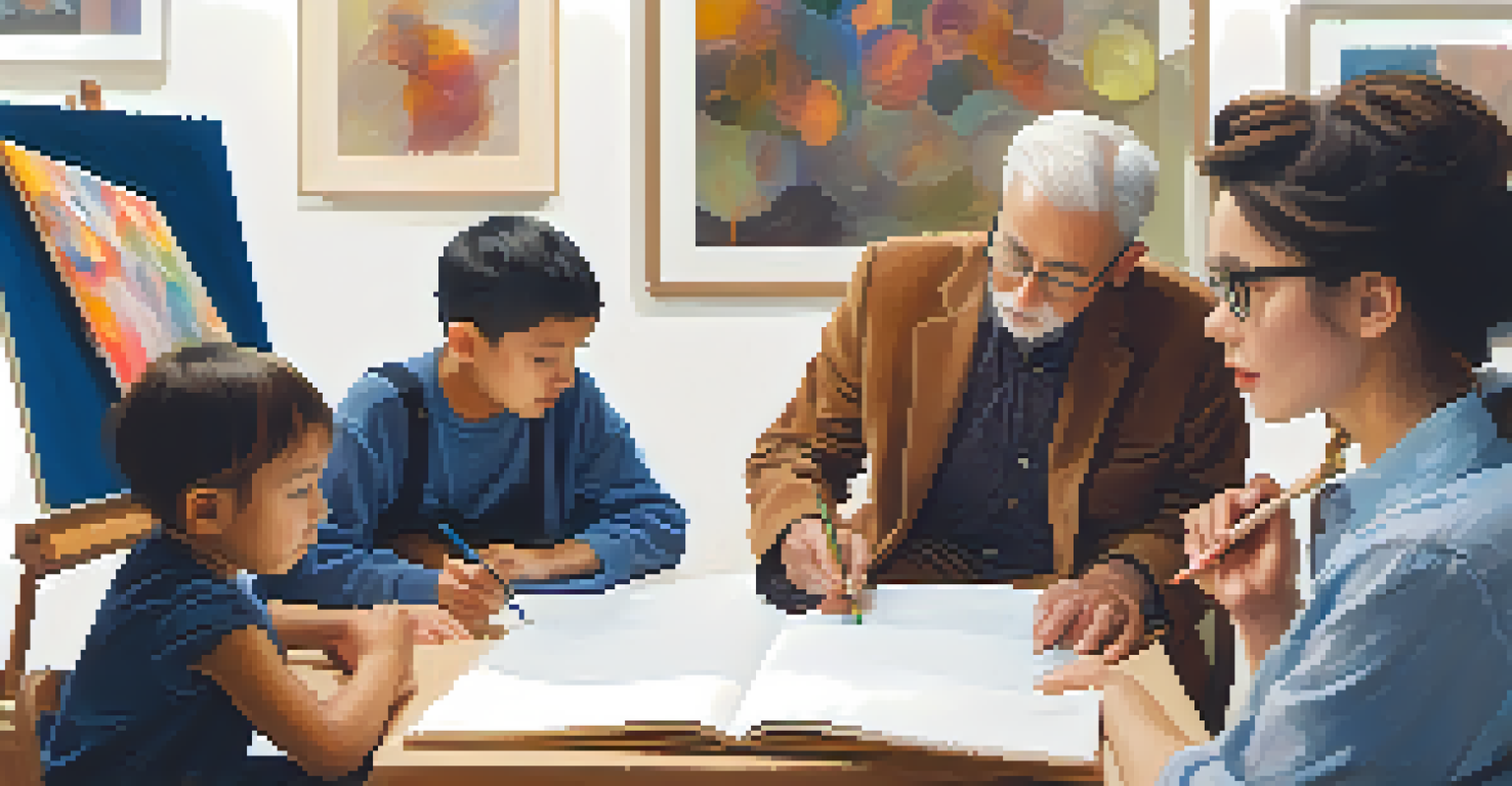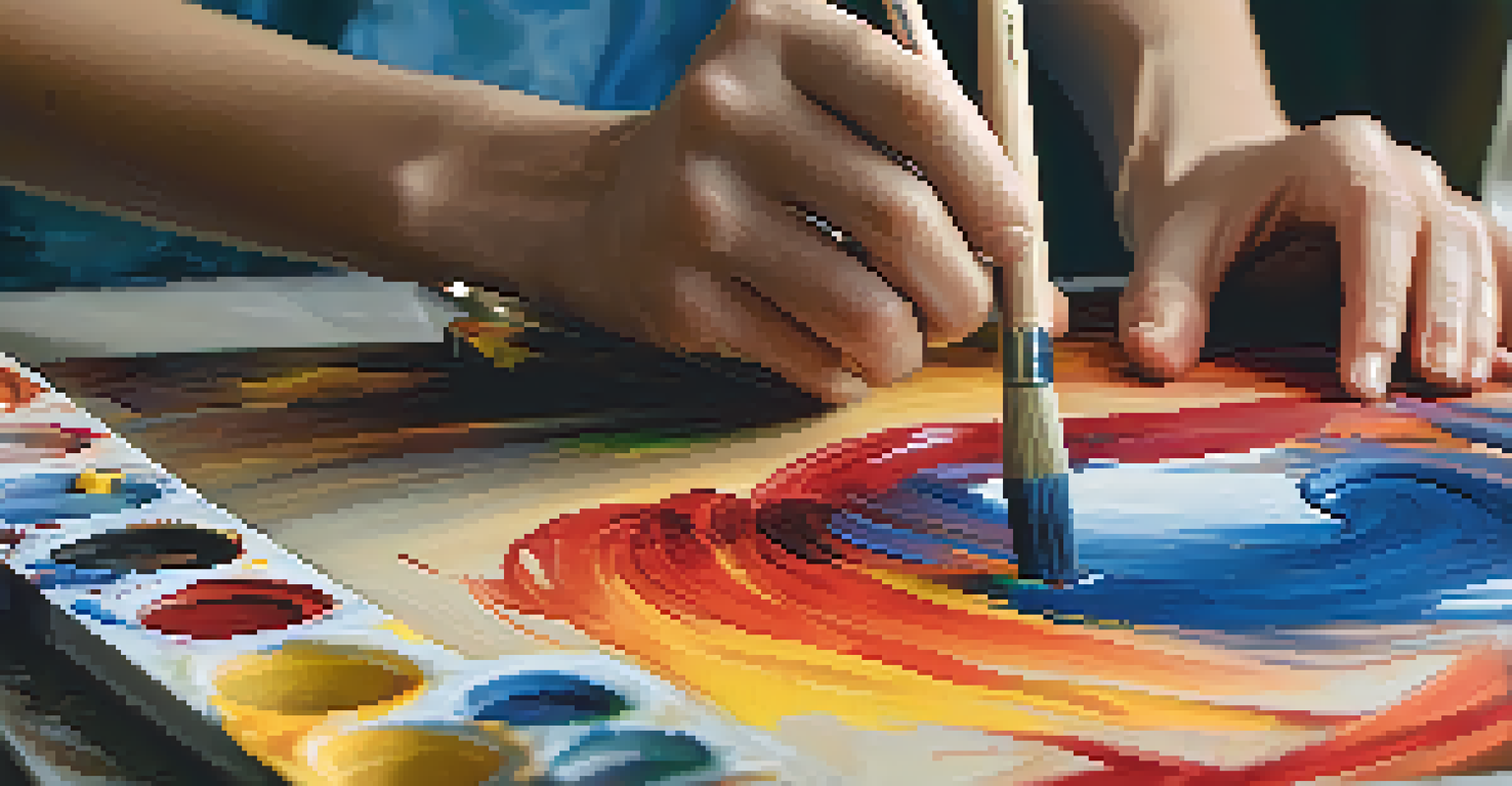Art Critique: A Method for Enhancing Emotional Insight

Understanding Art Critique: A Gateway to Emotional Insight
Art critique is more than just evaluating a piece of art; it's a journey into understanding emotions and intentions behind the work. By engaging with a piece critically, we unlock layers of meaning that might otherwise go unnoticed. This process allows viewers to connect emotionally with art, fostering a deeper appreciation for the creator's perspective.
Art is not what you see, but what you make others see.
When we analyze an artwork, we ask questions that lead us to explore our own feelings. What does this piece make me feel? Why does it provoke such an emotional response? These inquiries help us articulate our thoughts and feelings, enhancing our emotional insight not only about the artwork but also about ourselves.
For instance, consider a painting that evokes sadness. Through critique, we might discover the artist's personal story or the historical context that influenced the piece. This discovery deepens our emotional connection, transforming a simple viewing into a profound experience.
The Role of Subjectivity in Art Critique
One of the most fascinating aspects of art critique is its inherently subjective nature. Each person brings their own experiences, emotions, and biases to the table, which shapes their perception of art. This subjectivity enriches discussions, as diverse viewpoints lead to a more comprehensive understanding of the piece.

For example, a vibrant landscape might remind one viewer of childhood memories spent outdoors, while another might see it as a representation of overwhelming beauty. These varied interpretations highlight how personal experiences influence our emotional responses, making the critique process a valuable tool for self-discovery.
Art Critique Enhances Emotional Insight
Engaging with art critically allows viewers to explore their own emotions and gain a deeper understanding of the artist's intentions.
Engaging in discussions about art helps us appreciate different perspectives. It encourages empathy, as we learn to understand how others perceive emotions conveyed through the same artwork, expanding our emotional insight in the process.
Using Art Critique to Develop Emotional Vocabulary
Art critique offers a unique opportunity to expand our emotional vocabulary. When discussing art, we often find ourselves reaching for words to describe complex feelings. This practice helps us articulate emotions more clearly, both in relation to art and in our everyday lives.
Every artist dips his brush in his own soul, and paints his own nature into his pictures.
Consider a piece that evokes a mix of nostalgia and longing. By critiquing it, we might learn to express these feelings more precisely rather than simply saying we 'like' or 'dislike' the work. This enhanced vocabulary can improve our communication skills and deepen our emotional connections with others.
Furthermore, as we become more adept at identifying and expressing our emotions, we also gain insights into the emotions of those around us. This shared understanding fosters stronger relationships, making emotional insight a valuable outcome of art critique.
Art Critique as a Tool for Empathy Building
Participating in art critique can significantly enhance our capacity for empathy. As we explore the emotions and intentions behind a piece of art, we gain insight into the artist's experiences and feelings. This process helps us step into someone else's shoes, fostering a greater understanding of diverse human experiences.
For example, a powerful photograph capturing the struggles of a marginalized community can evoke a range of emotions. Through critique, we can discuss the societal issues at play, learning to empathize with the subjects in the artwork. This emotional connection can inspire us to take action or advocate for change.
Subjectivity Enriches Art Discussions
Each individual's unique experiences and emotions shape their interpretation of art, leading to diverse and enriching discussions.
Ultimately, art critique encourages us to see the world through a broader lens. By appreciating the emotional narratives presented in art, we cultivate a sense of empathy that extends beyond the gallery walls and into our daily interactions.
The Process of Art Critique: A Step-by-Step Approach
To engage in effective art critique, it's helpful to follow a structured process. Start by observing the artwork closely, noting colors, shapes, and textures. This initial observation lays the foundation for deeper emotional exploration, as it encourages us to consider our immediate reactions.
Next, reflect on your feelings and thoughts about the piece. Ask questions like: What emotions does it evoke? How does it relate to my own experiences? This reflective practice is crucial for enhancing emotional insight, as it allows us to connect personal narratives with artistic expression.
Finally, share your insights with others. Engaging in conversations about your interpretations can lead to a richer understanding of the artwork and foster deeper connections with fellow art lovers. This collaborative approach not only enhances our appreciation of art but also strengthens our emotional awareness.
Challenges in Art Critique: Navigating Emotional Barriers
While art critique can be a rewarding experience, it often comes with challenges. Emotional barriers, such as fear of judgment or vulnerability, can hinder our ability to express our thoughts and feelings. Recognizing these barriers is the first step in overcoming them and fully engaging in the critique process.
For instance, you might feel hesitant to share your emotional response, fearing it may be viewed as 'wrong' or 'too personal.' However, understanding that art is subjective can help alleviate these concerns. Embracing your unique perspective can enrich the discussion and enhance your emotional insight.
Art Critique Fosters Empathy Growth
By analyzing the emotions behind artworks, participants develop empathy, gaining insight into the experiences of others.
By acknowledging and addressing these challenges, we create a more open and supportive critique environment. This fosters a sense of safety, encouraging us to explore our emotions more freely and enhancing our overall experience with art.
The Lasting Impact of Art Critique on Emotional Growth
Engaging in art critique not only enhances our emotional insight but also contributes to our overall emotional growth. As we develop a deeper understanding of our feelings and those of others, we become more resilient and empathetic individuals. This growth can positively impact our relationships and interactions with the world around us.
Over time, the skills we cultivate through art critique—such as self-reflection, empathy, and emotional expression—can translate into other areas of our lives. We become better communicators, more understanding friends, and more compassionate members of our communities.

In essence, art critique serves as a powerful tool for personal development. By embracing this process, we unlock the potential for emotional insight that enriches not only our appreciation for art but also our human experience as a whole.